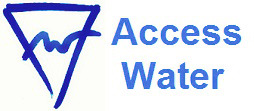Australia (Indigenous Australians)
In the 2006 census, there are 455,000 Indigenous Australians.
10% live in remote areas and 16% in very remote areas.
A survey of housing in remote communities showed that 31% required major repair or replacement.
The main access to drinking water for the majority of permanent remote dwellings (53% bore water) (30% were connected to a town supply) and (11% the source was a river or reservoir)
A big problem remote aboriginal communities face are lack of infrastructure.The issues that arise are contamination of water and major problems with sanitation.Pipes are often broken and contamination happens. Due to conditions, pipes degrade at a much faster rate. Toilets are left broken and unusable. Often the toilet block are made many years ago using asbestos which causes pleural plaque, lung cancer, asbestosis, plaque on the diaphragm, and mesothelioma.
Communities which are located near uranium mines where contamination gets into the water supply, have shown that cancer cases doubled among Aborigines near Australia’s biggest uranium mine – the Ranger Mine in Kakadu National Park.
Indigenous homes who have functioning clean, safe drinking water, waste, cooking and cleaning facilities has been estimated as low as 13% in the Northern Territory.
A survey of housing in remote communities showed 31% required major repair or replacement. Even in towns and cities, the homes for aboriginal people are often in poor states of repair and have major problem with plumbing and sanitation. 35% of Indigenous households were living in dwellings that had structural problems and problems with water and sanitation.
Sources –
Australian Human Rights Commission
Creative Spirits
